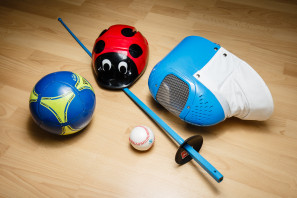Background
Ours is a two-form entry Primary school in Brighton with 426 pupils on roll. Most pupils are of white British heritage. The school had received whole-school staff training from Allsorts, a project that supports young people who are lesbian, gay, bisexual, transgender or unsure.
Initial audit
Lunchbox activity – Can you sort these lunchboxes?
Year 1 (age 5–6, 16 female and 14 male pupils) was split into four groups with a set of lunchbox picture cards at each of their tables. The children were then asked to sort the lunchboxes into groups, but no criteria were given, so children were left to decide how they would divide them up.
I thought the children would probably sort the lunchboxes according to potential owners, and suspected that the issue of gender stereotyping would arise. One group surprised me by sorting their lunchboxes into has pictures of living things and has no pictures of living things, but the rest of the groups were quick to sort the lunchboxes according to whether they thought they were for boys or girls.
There was very little debate between the groups as to whether each lunchbox was a girl lunchbox or a boy lunchbox, and the three groups that sorted by gender had the same lunchboxes in each group. When asked why they felt certain lunchboxes were girls’, they responded: because it is pink; because it is pretty. When questioned on their choices for the boys’ lunchboxes, they answered: it’s boy colours; it’s cool. From the results, it appeared that a large proportion of the class held gender stereotypes.
Activities in-between
- We continued the lunchbox activity as a whole class discussion. We looked at the groups who had sorted by gender. I picked a lunchbox with a dinosaur from the boys’ pile and asked: Could this not be my lunchbox? I like dinosaurs. The children said it could belong to me, so we decided to put it between the two groups, adding a new pile for anyone. We repeated this with the other lunchboxes; the children ended up putting most lunchboxes in the new ‘for anyone Some lunchboxes caused more debate than others. There was a lot of discussion around the pink lunchboxes but children drew on other experiences, such as: Well my dad has a pink t-shirt and he wears it all the time.
- Our term topic at the time was Fairytales so I used this as an opportunity throughout the next few weeks to read books that challenged gender stereotypes often seen in fairytale stories, e.g. The Paper Bag Princess (Robert Munsch) and Dangerously Ever After (Dashka Slater). We often referred back to the lunchbox activity to remind us that we didn’t need to pigeon hole certain genders into liking certain things.
Final audit
The final audit took place around seven weeks after the first. I decided to change the original activity. It was Christmas time so I asked the children to help Santa sort his sack of toys, which included Lego, a doll, a toy car, a colouring book, a teddy bear and a robot. The class where then asked: Who were the toys for? There was a huge shift in attitude since the first lunchbox audit. Most children in the class now said it could be for anyone rather than labelling the toys as a girl’s or a boy’s. The students were able to discuss their ideas more clearly, coming up with comments such as: Well I don’t like dolls but others boys can play with them.
Reflection on whole process
The initial audit made me realise how much gender bias there was in my class, something I may not have noticed if I had not used the activity. I found that the most effective strategy for challenging stereotypes was group discussion and drawing on a wide range of children’s experiences.
Teaching Tips
Try sourcing storybooks, posters and non-fiction that challenge gender stereotypes. Use real-life examples from parents or the wider community who challenge gender roles in work, for example, can you find a male nurse, or a female builder?
Featured image “Lunch boxes” by nickd from Chicago, IL, United States – lunch boxes. Licensed under CC BY 2.0 via Wikipedia


